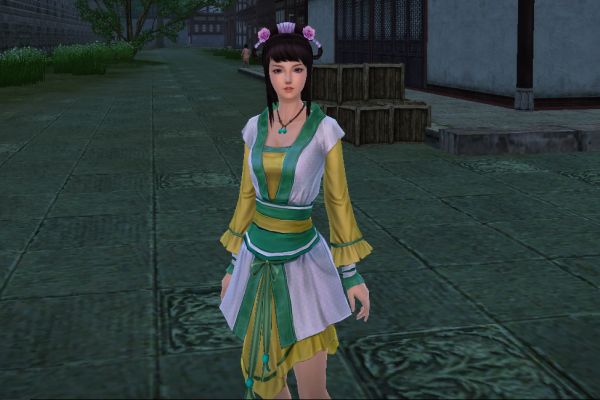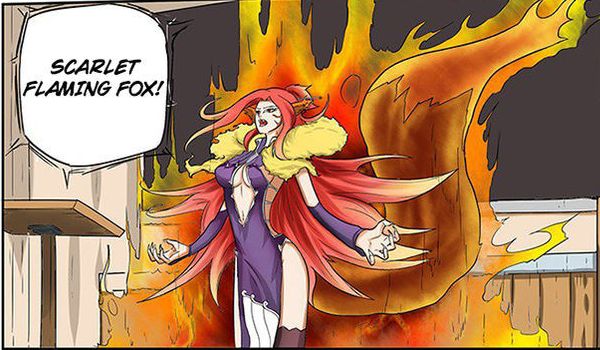
This game is a nice break from many recent MMORPGs in that everyone is decently (and usually prettily) dressed.
In a couple days I plan to start writing a quick novel based on an imaginary Wuxia game. (Wuxia is the Chinese martial arts heroic fantasy, a genre going back over 2000 years!) So I guess I ought to have at least a passing knowledge of the premier Wuxia game in our own world, right? I have already written about a Wuxia game called Swordsman Online, but Age of Wushu is still the gold standard in this genre from what I hear. After watching a number of YouTube videos and installing the game myself, I can see why.
Extremely complex and detailed: I won’t ask you to watch this Wedding Guide video (about in-game weddings) unless you are already bored, or the follow-up Guide to Married Life, but they are long and elaborate for good reason. You can not only get married in-game with some degree of ceremony. No, you can choose between a wide price range of wedding rituals, each with more optional accessories than the last. Then there are various activities, more of them for the more expensive weddings, which give various gifts and blessings to the happy couple and their attending friends. Notice that if you have made enemies in the game world, they may hire a ruffian or two to vandalize your wedding banquet, so it may be smart to hire a professional guard for the occasion… Apart from the cool wedding dresses and other mementos, particularly successful weddings will bestow a new cooperative combat skill on the couple, which can be leveled up with practice and make the two of them a particularly devastating duo. ^_^
And that’s just one obscure aspect of the game. (And one I am never going to experience, not there either.) The game has no levels, and I am not sure there is any limit to the number of skills you can learn, except that you can only join 1 out of the 8 schools and legally learn their combat skills beyond the basics. You can however spy on other schools and also steal scripts, if you don’t mind the risk involved. Learning a skill is not the same as mastering it, though. You have to practice it and you have to improve the stats (physical abilities like strength or speed etc) that the skill is based on. And you have to put “cultivation points” into abilities to make them grow. And on that note…
Strengthening body and soul: In western Sword & Sorcery fantasy, the swordsman and the sorcerer are sharply divided, often being enemies (like in Conan the Barbarian and similar works, where the magic-users are generally seen as evil and treacherous) or teamed up for a common cause (like in most modern massive online games, from EverQuest to World of Warcraft). But the Eastern ideal is a man who strives for perfection of body and soul alike. The ideal of Chinese mysticism, the Immortal, is a person (originally almost always a man) who has mastered his body and soul to such a degree that that even time can not overcome him.
In Age of Wushu, the player is constantly improving his abilities through “cultivation”. Unlike Tales of Demons and Gods, where cultivation was a separate practice undertaken while sitting down (similar to traditional meditation), in the game Age of Wushu it is something that happens continually, kind of like mindfulness I guess? You start with a fairly basic internal skill, Self Recollection, but even this increases many of your abilities day by day and increase your attack and defense. You will need to do special quests to increase the maximum level after a while, and you will later learn other internal skills that also make you stronger. Even when you are logged off, your character remains in the game, doing various useful things and improving herself, especially if you have a VIP account that is bought (indirectly) for real money. “Pay to win”, but actually it just speeds up things that would otherwise take more time. The maximum values are not moved, but they are pretty far off when you start. This game is definitely designed for the long run, although not the 10 years per character I estimated for my imaginary Wuxia game, luckily.
***
I downloaded the game from supplier, which took some hours. Unlike World of Warcraft for instance, you don’t just download a small installer which then fetches the game with the most important parts first, so you can start making your character while the download continues. That would be the sane thing to do, but no, quite the opposite. By default you download a .RAR file, a format of file compression that is mostly used in Linux and not supported by Windows without downloading a third-party archive handler like 7zip or WinRAR. The file is over 18 GB, so yeah, that took a few hours over ADSL. Even backing it up to my NAT (home server) takes hours! This file must then be unpacked to a separate folder, where you start one of the files which will then do the actual installation to yet a third place where the actual game will reside on your hard disk. So you better make sure you have plenty of disk space before you start. Oh, and you register your account at their website first, although you can log in with Google or Facebook if you want to give them that much access to your life.
This may be just me, but when I had created my first character and started on the tutorial, the keys that should turn the character sideways did not work. I could walk forward and backward, and move sideways like a crab, but not turn. I changed to the mouse controls, but could still not turn. When I exited the game, my character disappeared forever, only the game was still reserved.
I ran a repair on the game files and tried again. I still could not turn my character in any way. Changing the keys had not worked either. In a flash of inspiration (similar to the flash of inspiration when rodents claw on the wall of their cage until they hit the latch, I guess) I opened the main (Esc) menu and chose “Select character”. At this point my character was still there, and I soon returned to the scene where I had pressed the key, but now the controls worked. The interface is still clunky (the turn-button turns you 90 degrees for instance so you may have to sidestep to get in a combat position) but at least it worked.
The tutorial seems otherwise quite forgiving, showing you some basic skills and pitting you against some bloodthirsty but very weak bandits. That’s as far as I have come with the actual game myself, but from the (many) YouTube videos it seems to be a very deep and complex game. Unfortunately long-time players complain that the game is going downhill due to excessive Play To Win features. The game is free to play but as seen in the wedding videos, the more money you spend, the more benefits you get. This upsets people who want to buy things with their free time instead. I am pretty relaxed about such things. I already exchanged free time for money at work, where I can help real people (occasionally – the competition is fierce on our team). So I don’t mind. Plus I am Norwegian, very few things from other countries are expensive by our standards, due to our high salaries and high cost of living.
Well, that is more than enough for now. Oh, one thing. “Wushu” is the fonetik spelling of Wuxia, supposedly. In my mind however, Wuxia will always rhyme with fuchsia.
(This entry is backdated because I wanted to play the game a bit to make sure I did not mislead too much. So it’s been lying as a draft for a while.)


